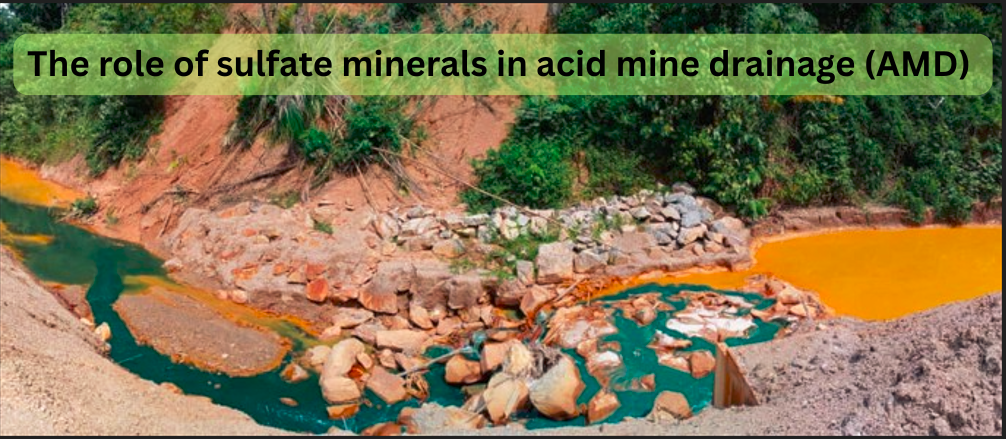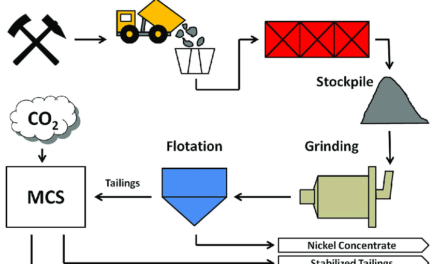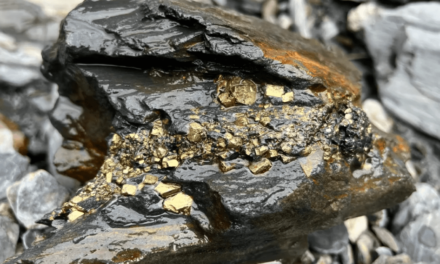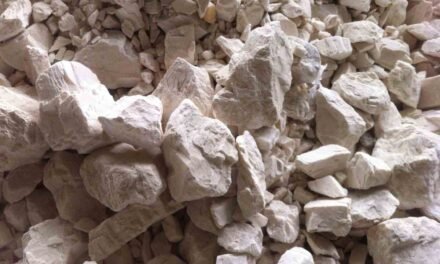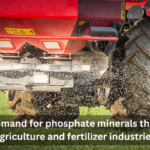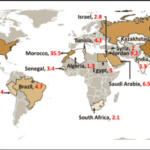Sulfate minerals play a significant role in acid mine drainage (AMD) and other environmental challenges associated with mining, particularly in operations that involve the extraction of sulfide ores such as pyrite (FeS₂), marcasite (FeS₂), and other sulfide-rich minerals. The interactions between sulfide minerals and environmental factors can lead to the formation of acidic waters and the release of harmful metals and contaminants into the environment. Below is a detailed explanation of how sulfate minerals contribute to acid mine drainage (AMD) and other environmental impacts:
1. Acid Mine Drainage (AMD) Formation
Process Overview:
AMD is the outflow of acidic water from mining operations that have exposed sulfide minerals to air and water, triggering an oxidation process. The main sulfate minerals involved in AMD are sulfide minerals such as pyrite (FeS₂) and other iron sulfides that occur naturally in the earth’s crust.
- Oxidation of Sulfides: When sulfide minerals, particularly pyrite, are exposed to air and water during mining, they undergo a chemical reaction called oxidation. The process is as follows:
- Pyrite (FeS₂) + Oxygen (O₂) + Water (H₂O) → Iron sulfate (FeSO₄) + Sulfuric acid (H₂SO₄)
- The sulfuric acid produced in this reaction significantly lowers the pH of the water, creating highly acidic conditions in the surrounding environment.
Key Impact:
- The sulfuric acid generated by the oxidation of pyrite can dissolve other metals in the surrounding rock, such as copper, zinc, lead, and arsenic, resulting in the contamination of water with these toxic metals. This phenomenon can lead to toxic runoff, which harms aquatic ecosystems, vegetation, and soil.
2. Heavy Metal Leaching and Contamination
Leaching of Toxic Metals:
- As the acidity in the affected water increases, metals that are normally bound in the rock matrix begin to leach out, making them more mobile and bioavailable in the environment. The dissolution of metals such as iron (Fe), copper (Cu), zinc (Zn), arsenic (As), and cadmium (Cd) into the water further exacerbates environmental pollution.
- Arsenic, a toxic element, is especially concerning as it can persist in the environment, contaminate drinking water supplies, and enter the food chain. The presence of arsenic and other metals in water can lead to serious health risks for both wildlife and humans.
Key Impact:
- The release of toxic metals into rivers, streams, and groundwater systems can cause ecological degradation in aquatic ecosystems, including fish kills, the destruction of aquatic habitats, and the loss of biodiversity.
3. pH Dependent Metal Mobility
- The lowering of pH caused by acid mine drainage increases the solubility and mobility of toxic metals. In an acidic environment (pH < 4), metals like lead, copper, and zinc become highly soluble, and their mobility in water increases, resulting in more severe environmental contamination.
- In addition to the direct toxicity of metals, the low pH itself can harm aquatic organisms. Fish, macroinvertebrates, and microorganisms are especially sensitive to changes in pH, and exposure to acidic waters can lead to reduced biodiversity and loss of ecosystem function.
4. Sulfate Pollution and Its Environmental Impact
- The formation of sulfate (SO₄²⁻) as a byproduct of the oxidation of sulfide minerals contributes to an increase in sulfate concentrations in water bodies. While sulfate itself is less toxic compared to the metals released during AMD, excessive sulfate concentrations can lead to several issues:
- Eutrophication: Elevated sulfate levels can contribute to eutrophication (excessive nutrient enrichment) in freshwater systems. High sulfate concentrations promote the growth of certain algae, leading to oxygen depletion and further degradation of water quality.
- Sulfate-Reducing Bacteria (SRB): In some environments, high sulfate levels can support the growth of sulfate-reducing bacteria that convert sulfate into hydrogen sulfide (H₂S), which is a toxic gas and can exacerbate environmental issues. This can further lower the quality of soil and water, making it difficult for flora and fauna to thrive.
5. Environmental Challenges Beyond AMD
Besides the direct effects of AMD, the presence of sulfate minerals can contribute to several other mining-related environmental challenges:
Soil and Water Contamination:
- Sulfate salts (such as gypsum) may be leached from mining waste or tailings, and while gypsum itself is not highly toxic, the leaching of salts into surrounding ecosystems can lead to salinization of soil and water. This affects the fertility of the soil and can harm agricultural productivity.
Dust and Particulate Matter:
- Mining operations, especially in sulfate-rich regions, can release particulate matter that contains sulfates. This can contribute to air pollution, leading to the formation of acid rain, which impacts both terrestrial and aquatic ecosystems. Acid rain can further accelerate the degradation of soil, water bodies, and infrastructure, as well as contribute to respiratory issues for nearby communities.
Tailings Management:
- Mine tailings, which may contain both sulfide minerals and sulfate salts, represent a significant challenge in terms of storage and containment. Improperly managed tailings ponds can leak, leading to the leaching of toxic substances, including both acidic water and metals, into nearby water sources.
Mitigation Strategies for AMD and Environmental Impacts
Several methods can be used to mitigate the environmental impacts of sulfate minerals in mining operations:
1. Prevention of AMD Formation
- Wetland treatment systems, which use natural processes to treat acidic water, can help neutralize the acidity and remove dissolved metals. Constructed wetlands with appropriate vegetation and microbial communities can efficiently reduce heavy metal contamination and restore water quality.
- Alkaline neutralization, using substances like lime (CaO) or limestone (CaCO₃), can be used to raise the pH of the acidic drainage and precipitate metals, making the water less toxic.
2. Effective Tailings Management
- Sealing tailings with impermeable covers or water management systems can limit exposure to oxygen and water, preventing the oxidation of sulfide minerals and the formation of sulfuric acid.
3. Sulfate Recovery and Recycling
- In certain cases, sulfates can be captured from mine waters and converted into gypsum or other useful byproducts, reducing their environmental impact and allowing for their use in construction or agricultural applications.
4. Monitoring and Remediation
- Continuous monitoring of water quality, including pH, sulfate concentrations, and metal content, is essential in ensuring early detection of AMD and other environmental issues. Remediation methods, including pH adjustment, heavy metal precipitation, and the use of bioreactors, can be implemented to restore affected ecosystems.
Conclusion
Sulfate minerals, particularly sulfide minerals like pyrite, play a central role in the formation of acid mine drainage (AMD), which presents significant environmental challenges. These challenges include heavy metal contamination, soil and water acidification, and eutrophication of freshwater systems. However, through proactive management, including the use of neutralization techniques, wetland treatment systems, and effective tailings management, the environmental impact of sulfate minerals can be mitigated. By adopting sustainable mining practices, mining companies can reduce the risk of AMD and ensure that the environmental footprint of mining operations is minimized.
Hashtags
#SulfateMinerals #AcidMineDrainage #MiningPollution #EnvironmentalImpact #MiningSustainability #WaterContamination #MiningWaste #SulfateContamination #EcoFriendlyMining #EnvironmentalRisks #MineReclamation #SulfatePollution #MiningMitigation #SustainableMining #MiningEnvironment #MiningWasteManagement #AcidMineDrainagePrevention #MiningPollutionControl #EcoMiningSolutions #SulfateAndAMD

